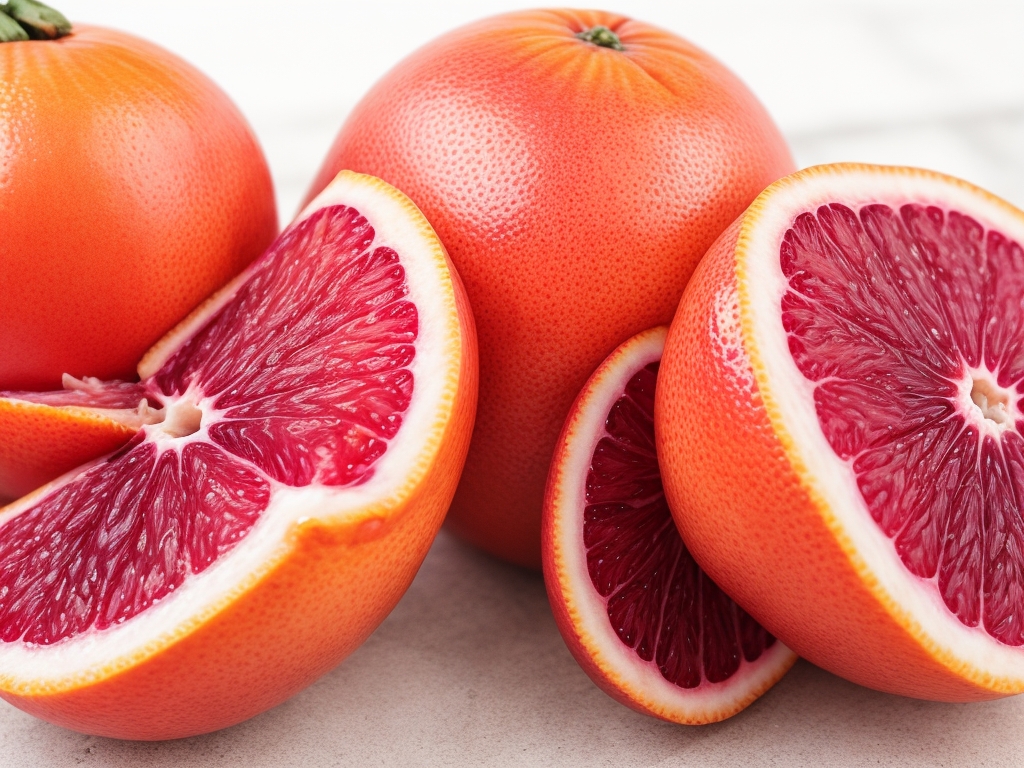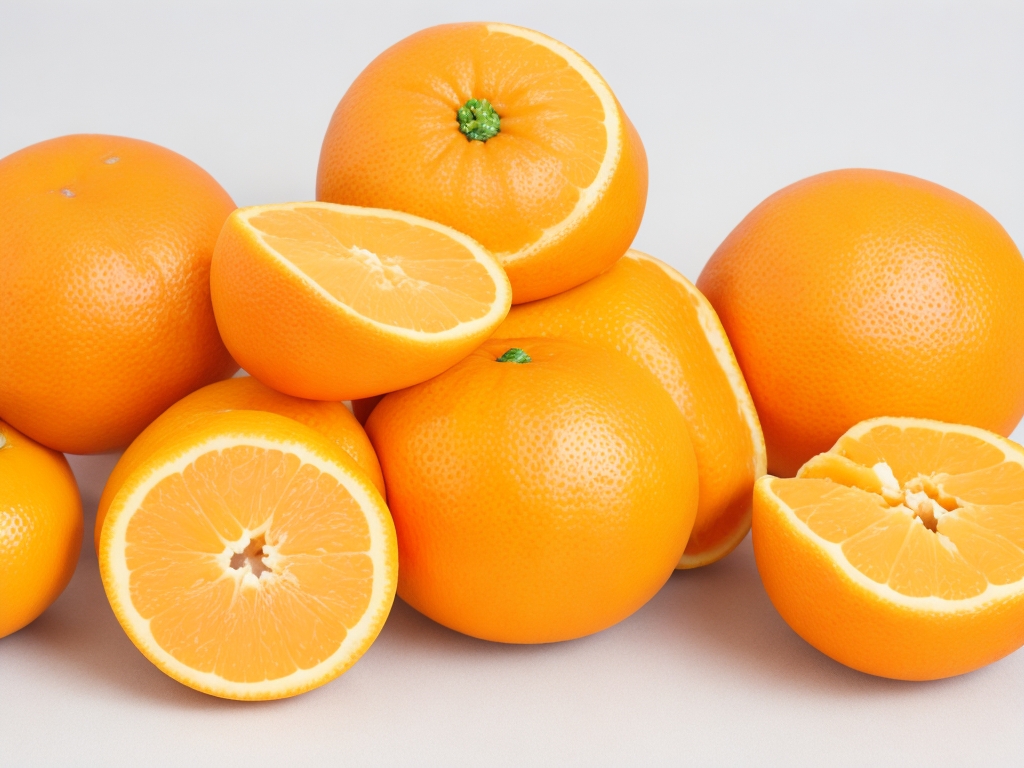In this article, you will learn all about the different types of oranges. From the well-known Navel orange to the exotic Blood orange, you’ll discover the various flavors, colors, and textures that each type brings to the table. Whether you’re a citrus connoisseur or just someone who enjoys a refreshing orange, this article will provide you with a wealth of information on the diverse world of oranges.
One type of orange you might be familiar with is the Valencia orange. Known for its juicy and sweet taste, this orange is a popular choice for juicing. It’s perfect for enjoying a glass of fresh orange juice on a sunny morning. Another type to explore is the Cara Cara orange, also known as the “pink navel.” This orange has a vibrant pinkish-red flesh and a deliciously sweet flavor with hints of cherry and raspberry. It’s a unique and visually striking option for adding some flair to your fruit salad.
Introduction to Oranges
Oranges are juicy and delicious fruits that are loved by people all over the world. With their vibrant color and refreshing taste, oranges are a popular choice for both eating fresh and using in various culinary creations. In this article, we will take a closer look at the different types of oranges, their history, health benefits, culinary uses, and more. So get ready to discover the wonderful world of oranges!
Overview of Oranges
Oranges are citrus fruits that belong to the Rutaceae family. They are round in shape, with a thick, orange-colored skin that is easy to peel. The flesh of oranges is divided into segments and is rich in vitamin C and other essential nutrients. Oranges are classified into different types based on their taste, acidity, and other characteristics. Let’s delve deeper into these different categories and explore the fascinating variety of oranges available.
History of Oranges
Oranges have a rich history that dates back thousands of years. It is believed that oranges originated in Southeast Asia and were first cultivated in China around 2500 BCE. From there, oranges spread to India, the Middle East, and eventually Europe. The popularity of oranges grew during the Age of Exploration, as European traders brought them to the Americas and other parts of the world. Today, oranges are grown in many countries, including Spain, Brazil, the United States, and China.
Sweet Oranges
Navel oranges are one of the most popular sweet orange varieties. They are named after the small, navel-like formation on their blossom end. Navel oranges are seedless and have a slightly thicker peel compared to other orange varieties. They are known for their sweet, juicy flavor and are often enjoyed fresh or used in desserts and salads.
Valencia Oranges
Valencia oranges are another well-known variety of sweet oranges. They are prized for their sweet and tangy flavor, making them a favorite for juicing. Valencia oranges are a great source of vitamin C and are commonly used in citrus juices and smoothies. They also have a thin, smooth peel, which makes them easy to peel and enjoy.
Blood Oranges
Blood oranges are unique in their appearance and taste. Anthocyanins, a type of antioxidant, give these fruits their deep red flesh. The flavor of blood oranges is sweeter and less acidic compared to other orange varieties. Bring vibrance and flavor to your salads, desserts, and cocktails with these vibrant fruits that add a delightful burst of color.

Sour Oranges
Seville Oranges
Seville oranges, also known as bitter oranges, are widely used for their sour taste. They have a thin, bumpy peel and a tart flavor that adds a tangy kick to dishes. People often use Seville oranges in the preparation of marmalades, sauces, and marinades. These citrus fruits also serve as the primary ingredient in the classic British spread known as “bitter orange marmalade.”
Bergamot Oranges
Bergamot oranges are small, round citrus fruits that have a unique and intense aroma. Italy is the primary cultivator of these oranges, known for their tangy and slightly tart flavor. People typically do not consume bergamot oranges fresh due to their acidic nature. However, their zest and oil find extensive use in perfumes, teas, and flavorings, such as the distinct taste associated with Earl Grey tea.
Exotic Oranges
Mandarin Oranges
Mandarin oranges, also known as tangerines, are small citrus fruits that are easy to peel and have a sweet, juicy flavor. During the holiday season, people adore sharing and receiving these popular gifts. Mandarin oranges serve as a delightful and nutritious snack, finding their way into a variety of desserts, salads, and marinades.
Tangerines
Tangerines share a close relation with mandarin oranges and are frequently used interchangeably. They are slightly larger and have a deeper orange color compared to mandarins. Tangerines have a sweet and tangy taste and are enjoyed fresh or used in various culinary applications.
Clementines
Clementines are a hybrid of mandarin and sweet orange varieties. They are small, seedless, and have a sweet, tangy flavor. Clementines are easy to peel and are a popular choice for children and adults alike. They are often enjoyed fresh, added to fruit salads, or used in baked goods.

Oranges in Cooking
Popular Orange Recipes
Incredibly versatile, oranges lend themselves to a wide range of recipes. From sweet to savory dishes, oranges add a burst of flavor and a touch of brightness. Some popular orange recipes include orange chicken, orange glaze for baked goods, orange vinaigrette for salads, and orange-infused desserts such as cakes and sorbets.
Uses of Orange Zest
Orange zest, which is the outermost layer of the orange peel, is a wonderful ingredient that adds a fragrant citrus flavor to various dishes. You can enhance the flavors of baked goods, sauces, marinades, and even cocktails by using it. Moreover, orange zest boasts an abundance of essential oils that you can dry or preserve for culinary seasoning purposes.
Health Benefits of Oranges
Vitamin C Content
Oranges are well-known for their high vitamin C content. Vitamin C is an essential nutrient that supports a healthy immune system, boosts collagen production, and acts as a powerful antioxidant. Incorporating oranges into your diet can help strengthen your immune system and promote overall well-being.
Antioxidant Properties
Oranges contain various antioxidants, such as flavonoids and carotenoids, that help protect the body against free radicals. These harmful molecules can cause cellular damage and contribute to the development of chronic diseases. The antioxidants present in oranges help neutralize free radicals, reducing the risk of oxidative stress and promoting cell health.
Boosting Immunity
The combination of vitamin C and other antioxidants in oranges helps strengthen the immune system, making it more resilient against infections and diseases. Regular consumption of oranges and other citrus fruits can help reduce the duration and severity of common illnesses such as colds and flu.

Oranges in Different Cultures
Oranges in Chinese Culture
Chinese culture deeply reveres and treasures them. Oranges hold auspicious meanings, symbolizing good fortune, abundance, and success. The Chinese New Year and various celebrations often involve the exchange of oranges as gifts. According to traditional Chinese medicine, oranges are renowned for their therapeutic properties and are utilized in the treatment of different conditions and illnesses.
Oranges in Indian Culture
Types of Oranges, known as “santra” in Hindi, are widely cultivated in India and hold cultural significance. They are often offered as prasad (religious offering) in Hindu temples and are used in religious ceremonies and rituals. In traditional Ayurvedic medicine, practitioners harness the numerous health benefits offered by oranges.
Growing Oranges
Ideal Climate Conditions
Types of Oranges thrive in warm climates with plenty of sunshine. They require a minimum temperature of 15 degrees Celsius (59 degrees Fahrenheit) to grow properly. The ideal climate for orange cultivation is a Mediterranean or subtropical region, where the temperatures remain between 20 to 30 degrees Celsius (68 to 86 degrees Fahrenheit) throughout the year.
Orange Tree Cultivation
You can grow orange trees from seeds, but propagating them from cuttings or young seedlings is more common. The trees require well-drained soil and regular watering. Plant them in an area that receives full sunlight for at least six hours a day. Orange trees take several years to reach full maturity and start producing fruit.

Orange Varieties
Comparison of Different Orange Varieties
There is a wide variety of oranges available, each with its own unique flavor profile and characteristics. Some oranges are sweeter, while others are sour or tangy. The choice of orange variety depends on personal preference and the intended use. People seek out navel oranges for their sweet taste, prefer Valencia oranges for juicing, and utilize Seville oranges in culinary applications that call for a tart flavor.
Selecting the Best Oranges
When selecting types of oranges, choose fruits that feel heavy for their size and have a firm, smooth skin. Avoid oranges with soft spots, mold, or wrinkled skin, as these may indicate spoilage. The color of the orange peel can vary depending on the variety, but it should be vibrant and bright. Remember to store oranges in a cool, dry place and consume them within a week or two for optimal flavor and freshness.
Conclusion
In conclusion, oranges are not only delicious but also offer a wide array of flavors and health benefits. From the sweet and juicy navel oranges to the sour and tangy Seville oranges, there is a perfect orange variety for everyone’s taste buds. So go ahead and explore the wonderful world of oranges, whether it’s enjoying them fresh, using them in cooking, or savoring their unique flavors in different culinary creations. Discover the joy of oranges and make them a part of your daily routine.

Hi, I’m King Phils, a Dragon Fruit enthusiast and blogger. Welcome to my website, where I share everything I know and love about this amazing fruit.